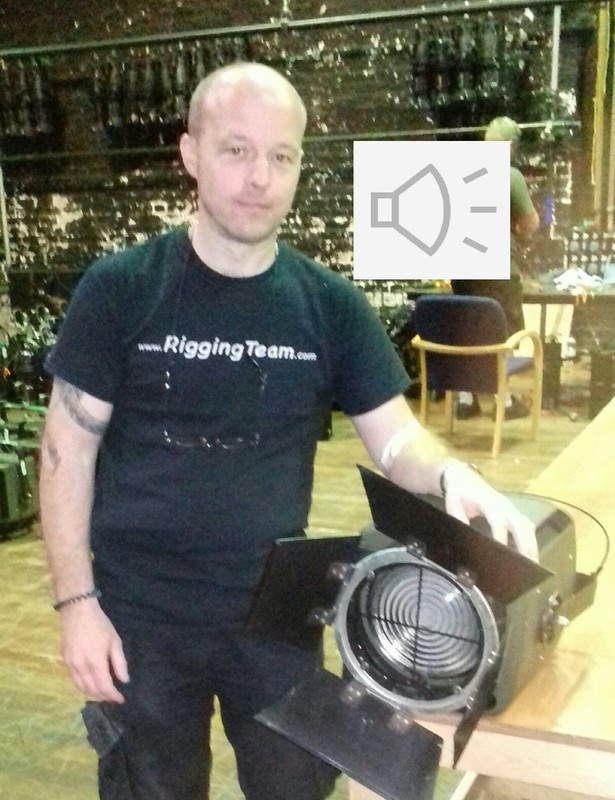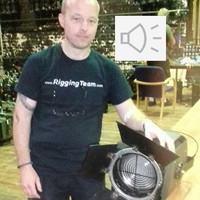Title
Michael Donoghue Interview: Power Consumption of the Theatre Royal
Date
3 August 2018
Description
Oral history interview with Michael Donoghue, Head of Sound & Lighting at the Theatre Royal
What's the story?
Born in London and involved in amateur theatre as a performer in his early years, Michael Donoghue ‘ditched’ his A levels to work professionally in the theatre. At the tender age of nineteen, in 1991 he moved to Nottingham to work as a lighting technician at the Theatre Royal.
Having clearly learnt ‘on the job’ Michael is now Head of Sound & Lighting at the venue, managing an extremely busy department.
In this interview Michael gets all technical and talks about the electricity consumption required to power the Theatre Royal. As he states this is quite high, compared to the power required to run a regular home.
You’ve got, in your house, the mains that comes into your house: electricity comes into your house at home. If you looked at the fuse that’s outside where your meter is, it’s probably a 100 amp fuse. That’ll run everything quite happily in your house. Or we’ve got temporary power in our wing that the normal lights plug into and that’s 200 amp 3 phase. There’s three separate “lives”, at 200 amps to run that. Up on the back wall of the stage there’s a 500 amp 3 phase supply. On one of the fly floors is another 63 amp 3 phase supply .There’s two more 63 amp 3 phase supplies and that’s just to power the temporary stuff that comes in the building. So then there’s the house dimmers on top of that. So power consumption is quite high.
Having clearly learnt ‘on the job’ Michael is now Head of Sound & Lighting at the venue, managing an extremely busy department.
In this interview Michael gets all technical and talks about the electricity consumption required to power the Theatre Royal. As he states this is quite high, compared to the power required to run a regular home.
You’ve got, in your house, the mains that comes into your house: electricity comes into your house at home. If you looked at the fuse that’s outside where your meter is, it’s probably a 100 amp fuse. That’ll run everything quite happily in your house. Or we’ve got temporary power in our wing that the normal lights plug into and that’s 200 amp 3 phase. There’s three separate “lives”, at 200 amps to run that. Up on the back wall of the stage there’s a 500 amp 3 phase supply. On one of the fly floors is another 63 amp 3 phase supply .There’s two more 63 amp 3 phase supplies and that’s just to power the temporary stuff that comes in the building. So then there’s the house dimmers on top of that. So power consumption is quite high.
Type
Oral interview
Location of item
Theatre Royal & Royal Concert Hall Nottingham
Rights
Theatre Royal & Royal Concert Hall Nottingham
Contributor
Interviewers: Jennifer Sherwood & Diane Jones
Transcriber: David Chilton
Transcriber: David Chilton


